A conference follow-up document if available here. It covers the publication of proceedings, the 2014 conference(s) and other points. Please take a look.
Aug 17
Questions Arising from the Conference
Questions arising from the conference – re-typed by Michael Hohl and Thomas Fischer:
How should we act, learn and understand in order to act, learn and understand better?
Bill Olivier
What are the differences between acting – learning – understanding in individual etc. and system etc.?
anon
What just happened?
Bernard
How do I know when I/we see/have an adequate distinction of the difference between two distinctions, especially if, as I currently see, the new distinction evolves a new domain that is inherently different than that of either of the two being compared (in any given context)? And I hope to be able to change what I think later. Or put coyly: “What is the difference between two differences?”
Pille
What (ought to be) / are the ethical and political impacts of a CyberSystemic intervention? (Involving acting, learning and understanding)
Martin Reynolds
What is the function of un-learning (function of forgetting?) (function of loosing?) Does it exist? What is its value? How to become proficient in it? HOW TO LEARN TO UN-LEARN? Is this my real (how to learn to unlearn and to use un-learning? (proficiently)) question or is my real question in the doodles?
Jennifer Kanary
How can cybernetics make a difference to care for the ocean/sea/water and earth/land and air we breathe?
Peter Tuddenham
If becoming is understood as a chance what is unlearning?
MGPLN
Does knowledge about understanding, acting and learning increase the fun factor of understanding, acting and learning?
Astrid
How can I/we avoid damaging existing acting & learning through trying too hard to understand them (like the centipede)?
Magnus Ramage
(How) Will my perceptions of the distinctions among acting, learning and understanding change as I reflect on this conference?
Allenna Leonard
When I really listened to people in my small group there was no redundant information.
Jerome Carson
What tools might I collect to help engender learning – acting – understanding by groups?
Noam Cook
It is my understanding that this way of holding a conference is helpful to designers + artists. Yes? If so, please explain why?
John Doe
How are the “new”? concepts found this weekend going to be applied?
Francesca Deià
How many different answers can we obtain to the enquiry of the conference?
Ricardo Barrera
Does the process of becoming wrought iron HAVE to be done with the classical (1967) steamhammer? (or are there alternatives?)
Jan Kuiper
What might the world and learning be like if our idea of what a computer is was NOT based on von Neumann architecture?
Mark Johnson
Is learning, acting and understanding at the same level of granularity (for individuals)?
Ludmila Malinova
How can I/we further distribute the benefits of the learning that has been achieved here through our own contexts of practice?
Barney Townsend
How can we treat the issue of gaps (disconnectedness) between understanding – learning and acting? Or do I not have to treat this as an issue?
Chathurika Kannangara
Acting, learning, understanding: Are the following terms also important here – memory, process, context, experience, mindful awareness, change, self-reflection, attention, focus, time, lifetime, subject-object unity, neocontextualization, unlearning and forgetting?
Bill Seaman
When I act on the basis of my present understanding – the structuring of my experiences into expectations – I may find both confirmation or/and surprise. I might call this “mistake”, “problem”, “error”, “friction” and so on… Confirmation of expectation reinforces my present understanding while error (might eventually) induce a new understanding so then I value error over confirmation. All errors are not equal – not in “importance” (who knows?) but in type. Can a “taxonomy of error” be developed to assist in my handling of them? Perhaps this would be a mistake.
Ted Krueger
How can we find out what we and others need to learn, to reach enough shared understanding, to support fruitful and positive collaborative action?
Simon Grant
Is the identity of second-order cybernetics inherently amorphous and fuzzy? Or might a more coherent identity emerge?
Anon
How can I make the questions I ask more like dancing?
Ben Sweeting
What was a question? (After Heinz von Foerster)
Albert Mueller
What can guide us in organizing 50 people in acting – learning – understanding?
Dai Griffith
Are there any relationships between acting, understanding and learning?
Anon
Can we talk or explain everything with cybernetics, effectively?
Anon
How can acting, learning, understanding lead to transferrable knowledge? How can this knowledge adapt over time?
Michael Hohl
Does the social media act as a “learning channel” between understanding and acting? A feedback channel for re-organization?
Faisal Kadri
Could an ethic for our living be that in reflecting on the acting – learning- understanding relationships we remember that we are always in acting (practice; doing) and if we treat acting as prime and act as often as possible in an emotion of love then this will always bring forth understanding?
Ray Ison
Why is “un-learning” a meaningful explanation concept since it is impossible except through physical injury?
Michael Lissack
Variety modulation (making new, dropping old distinctions): What do I do what I do this?
Thomas Fischer
Embodying?
Anon
Is the emergent property of misunderstanding and acting living?
Peter Bednar
How can we measure? Change? Learning? Unlearning?
Anon
How (what can I do?) to keep learning / understanding and acting fun and fresh?
Aartje Hulstein
How to use understanding and learning as states in pedagogy and in research? And would you or why would you do that?
Ann Morrison
Aug 15
Beginner’s Tutorial: White Board Photo
Here is a photo of the white board as it was left after Ranulph Glanville’s Cybernetics for Beginners Tutorial .
Aug 15
Performance Evening
Here are some impressions of the performances offered on the evening of Tuesday, 30-Jul-2013. First, Bill Seaman performed a generative piece:
Audio clip: Adobe Flash Player (version 9 or above) is required to play this audio clip. Download the latest version here. You also need to have JavaScript enabled in your browser.
Graham Clark performed with his violin.
Audio clip: Adobe Flash Player (version 9 or above) is required to play this audio clip. Download the latest version here. You also need to have JavaScript enabled in your browser.
Then Graham Clark and Mark Johnson improvised together on violin and electronic piano.
Audio clip: Adobe Flash Player (version 9 or above) is required to play this audio clip. Download the latest version here. You also need to have JavaScript enabled in your browser.
Mark Johnson conducted an improvisation exercise with conference participants.
Audio clip: Adobe Flash Player (version 9 or above) is required to play this audio clip. Download the latest version here. You also need to have JavaScript enabled in your browser.
Pille Bunnell and Peter Tuddenham volunteered to experience Jennifer Kanary’s wearable psychosis simulator.
Ranulph Glanville played his electronic sound piece “Blind”.
Aug 15
Work Session 1.1
Aug 12
Special Activity
On the morning of the first day of the main conference (Tuesday, 30-Jul-2013), facilitated by Mark Johnson and others, conference participants engaged in a sound-making activity using self-made musical instruments. A sound recording will be posted here shortly.
Aug 11
I hope to elaborate a short sentence or paragraph for each as part of the ”Conversation” conference book
Acting Learning Understanding
Understanding Learning Action
The qualities of a Mobius strip — suggestion of process / flow / simultaneity
Cut a Mobius strip down the middle and it becomes two interlocking loops
Cut across a Mobius strip and the static examples surface
The cut up method (poetics)
Recombinant Poetics
Recombinant Informatics
Action applied to understanding
Understanding applied to action
Thousands of these loops
Contextual application
The Meaning is the use – Wittgenstein
Language Games
Languaging Cybernetics – Terms
The process is the outcome
The wrong approach may illuminate the correct one
Observing where things fall apart and why
Levels of observation
Self-observation
Group self-observation
Multiple group self-observation
Meta-observation
Mistaken observations
Rule-based systems
Non rule-based systems
Floating systems
Systems which change as part of their normality
N Loops
Infinite loops
Black hole loops
The acceptance of different approaches related to context
The acceptance of different approaches related to content
Academic contexts vs non-academic
Jargon translations across disciplinary bounds
Form and Content (the circle of)
You can’t have form without content
You can’t have content without form
Forgetting with intention
Shifting perspectives
Multi-perspective system
Transdisciplinary
Meta-transdisciplinary
Embodied experience
Multi-modal experience
Perturbations
Human action as a perturbation to a system
The difference that makes a difference
The action that makes a difference
Attention – shifting the focus from one set of loops to another
Drawing on multiple loops to articulate a new approach
Mental collage of ALU | ULA loops
The circle made of these over time
Spiral of knowledge
Transformation
Differences of approach
Negotiation of terms
Negotiation of spaces
Negotiation of approaches
Incompatibilities
Acceptance of difference
Synthesis
Fresh
Humor as a displacement of context as context
Silence
Drawing as a score
Drawing as reflection of music
Cage (Notations) book
Plasticity
Computational Creativity
Teaching Machines
Conversation Theory
Conversation
Understanding as mediation
Systems
Poetic systems
Languaging
Open Order Cybernetics
Introducing the Machine as a new kind of observer — new forms of conversation
Neural Model – inhibit / excite
Beer’s model
Letting the fish swim and observing
Dissecting the fish for study (killing it)
Catching the Fish
Releasing the fish
Eating the Fish
Misunderstanding
Error
Displacement
Recontextualization
Unlearning
Emancipation
Theory Practice
Closure
Yes is more
Make everything as simple as possible but not simpler
Adaptation
Performative answers
Performative science [Hans Diebner]
Performative dialogics
Dialogical perspectives
Conversation Theory [Pask]
Displacement Illuminates Placement [Seaman]
The Art of Creation {Arthor Koestler]
Conversation spaces
Distributed conversations
Conversation breakdowns
Meta-Conversational practice
Nested loops
Recursions
Levels of recursions
Levels of recusiton in the conference
Levels of recursion in reality
Shifting context shifts the levels of recursion at operation
Spaces for ideas
Differing practices
Art can also change your mind
Poetic Cybernetics can be a space to explore cybernetic methods
Process science
Flexibility
Breathing
Filtering
Zen-less-ness
Mindful awareness – breathing, walking, thinking,
Theory of Everything
Theory of Nothing
A joke can also be sreious
Clinging to an approach
Giving ones self the permission to allow a multiple perspective of approach
Less is more
More less
Problem finding
Problem Solving
Acknowledging paradox
Accepting paradox
Employing paradox
Paradox arises because the world is as it is and language has an inability to reflect this complexity. [Seaman]
Koans
Cybernetic Koans
Understanding Understanding
Abstracting Abstraction
Machines and their current limits
The Singularity
Context
Simultaneous development
The simultaneous enfolding of action, learning and understanding
The parsing of action, learning and understanding
Making a distinction
The distinction as a unity
The difference that makes a difference
The similarity that enables one to make models
When models fall apart
When models are transformed though process
When models are built through dialogic process
When there is a congruency between process and thought
When there is a congruency between process and methodology
When there is a congruency between thought and action
When there is a congruency between theory and practice
When an incongruency arrives
Acknowledging incongruity as part of process
How does one recoup the incongruity?
Acceptance of difference
Acceptance of differing approaches
Looking for common language
Building common language through negotiation
Articulating definitions
Letting go of the infinite regress of definition…(See Pierce)
When models work they can be accepted across disciplinary bounds
Transdisciplinary models
Silence
Inaction
Hold your tongue
Playful
Unintentional
Correction
Error seeking
Insight
Insult
Injury
Fear
Trust
Freedom
Constraint
Hope
Surrender
Arrogance
Humility
Redundant
Singularity
Random
Indeterminacy
The rape is | therapist
See / Sea urgency
See / sea emergency
Multi-cultural
Cross-cultrual
Trans-cultural
Outcome
Income
Income generating
Anti-fragility
Myth understanding
Mobius strip
Circularity
Self-reference
Music
Muses
Blues
After conference blues
Overlapping projects to avoid
Relief psychosis
After expo blues
Fear
Transcendence of fear through Acknowledgement
Permission to change
Giving one’s self permission
Allowing one to be one and the other
Polysemy
Polysemic
Pluralistic
Monism – (Leibniz)
Dualism
Theatre
Acting – having multiple meanings
Theatre
Reality
Resilience
Endlastingspsychose
Centipede
Oraborus
Abstraction
Model
Meta-transdisciplinary
The cybernetic method
Cybernetic approaches
Circular causal systems
Anticipatory systems (Rosen)
Intention
Aug 11
Some Approaches to Tacit and Intuitive Knowledge Exploration – possible class
Class would explore different tacit abilities (or perhaps they are not only tacit but relate to knowledge acquisition in general)
and seek to develop them or make one aware of them…
The ability:
To listen and articulate concisely what someone has said.
To teach back this information.
To discuss an issue with someone from a different discipline.
To construct a tool to solve a problem be it physical or conceptual.
To model that which is at operation in a situation to different degrees of complexity.
To define new ways to model processes that have been previously impossible to model.
To make models with textual language and make models with mathematics and articulate the qualities of their differences.
To study the history of an idea or approach.
To study the history of inventions that lead to the construction of a particular new technology.
To study the history of ideas that lead to a particular conceptual approach to a given problem.
To study and articulate the history of failed solutions.
To break processes down into operational components.
To nest one idea inside of another idea.
To enfold multiple approaches in one solution.
To become aware of one’s body and what it is doing to accomplish some task.
To acknowledge the limits of the body and to define a machine to transcend its limits.
To define ways to minimize effort and energy expenditure.
To try a new approach to something that has always been done an alternate way.
To define new ways to approach and organize vast quantities of information.
To apply mnemonic systems.
To transcend wrote learning.
To make a map of a problem or situation and define the relationality between different aspects of processes that are at operation in that context.
To break things down into their smallest whole component parts.
To design functional modules that work together in different ways.
To conceptually design a machine to accomplish a particular task.
To apply a technology in a new way in a context that it was not initially designed for.
To understand computer programming as a foreign language of logic.
To understand physical logics – understanding the physicality of thinking.
To define multiple methodologies for tackling any given problem.
To bring knowledge from multiple contexts together in a new one that functions better than the initial set.
To learn from a mistake.
To explore the displacement of ideas employed in one context in another context.
To create and apply metaphors applicable to problem solving.
To know the difference between a good and a bad metaphor.
Formulate an abstract machine to enable the study of a process.
To break down a complex problem into smaller solvable problems.
Define a multi-perspective approach to the understanding any situation or process seeing all situations as involving hidden levels and complexity.
To learn how to take on new abilities – to learn how to learn.
To do research quickly and affectively using the internet and the library.
To know the language of search engines for formulating best searches.
To discern the difference between truth and falsness.
To be able to formulate a logical argument.
To make a drawing of a situation through careful observation of differing relations.
To acknowledge that different disciplines attack problems differently stemming from different histories.
To determine the relationality of language between two disciplines— exploring how language used in one discipline functionally relates to language used in a different discipline.
To define how one discipline can help illuminate a very different discipline through its methodologies.
To understand the limits of language to reflect the complexity of particular situations. To attempt to create new languages (or tools) to transcend this limit.
To understand circular causality and how interactivity effects the use of a particular operative system. Improving a system through this study.
Look at historical approaches to interdisciplinarity like cybernetics.
To understand contemporary ideas of what an observer is and can be given the use of the computer and new technologies.


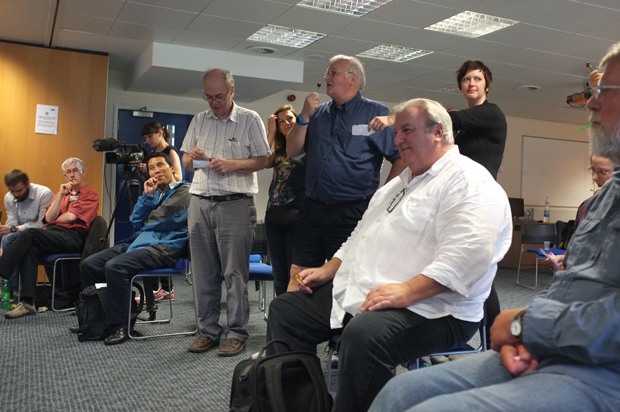
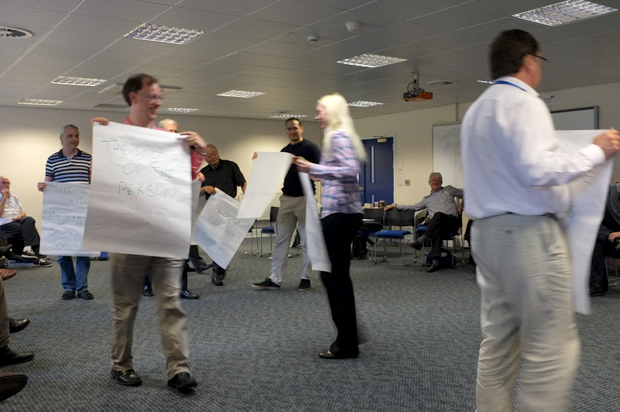
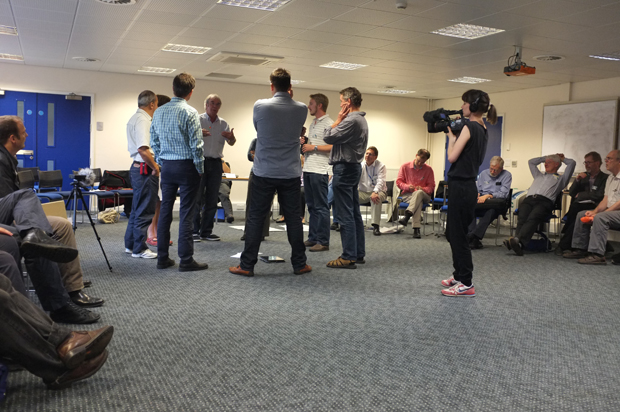

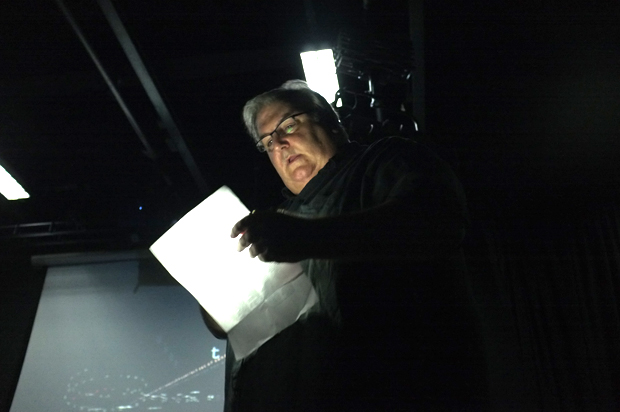
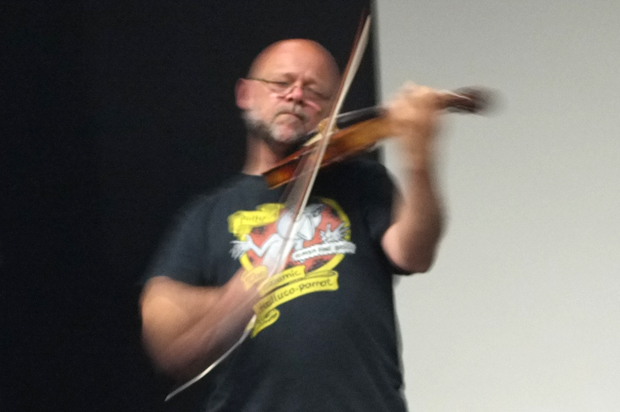
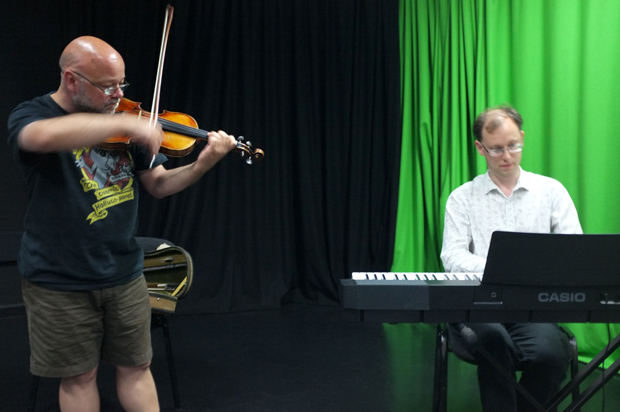


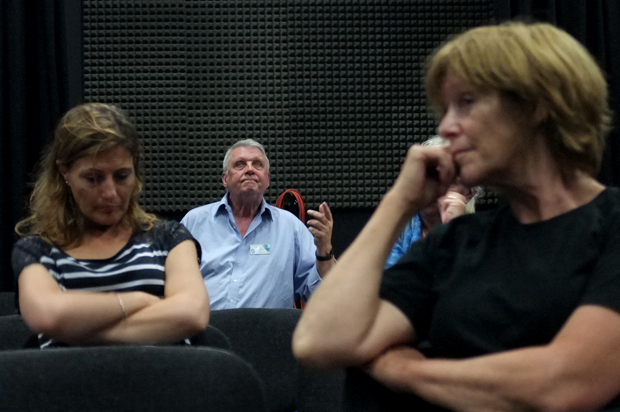
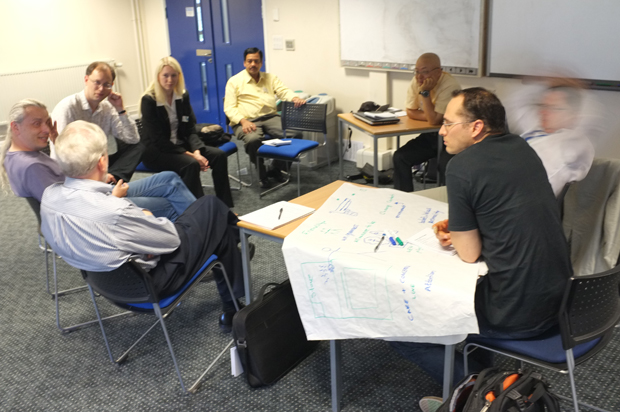
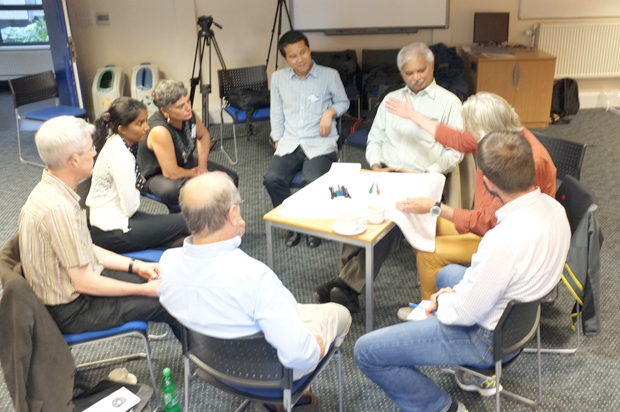




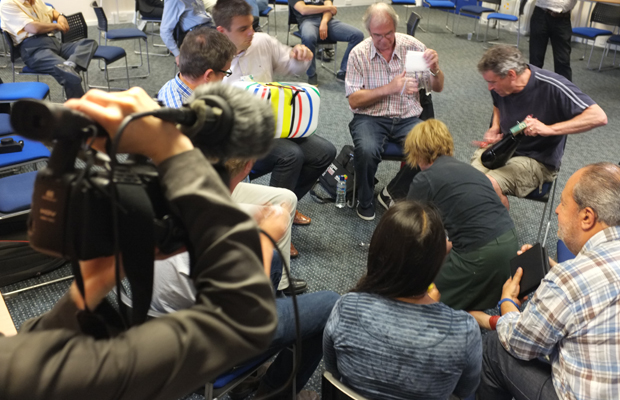












Most Discussed